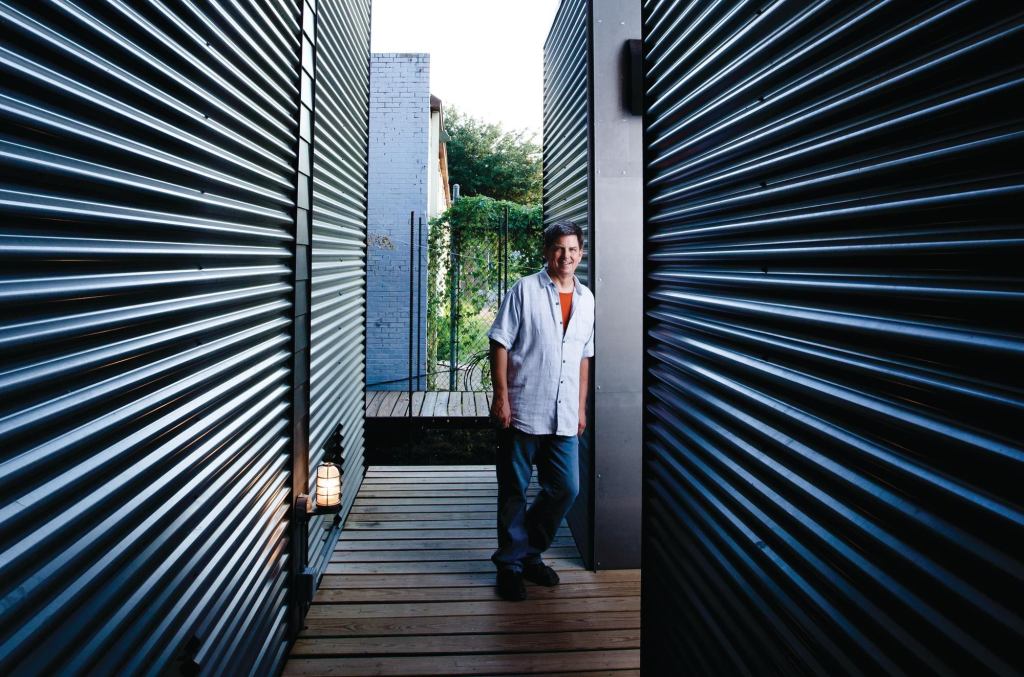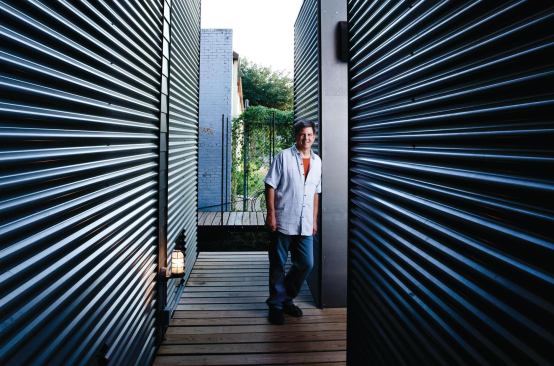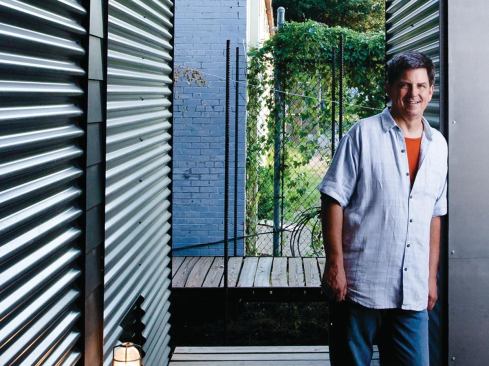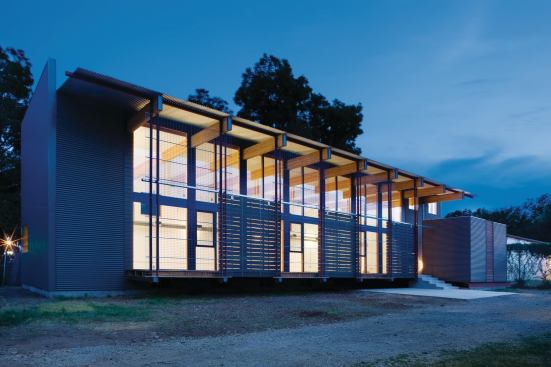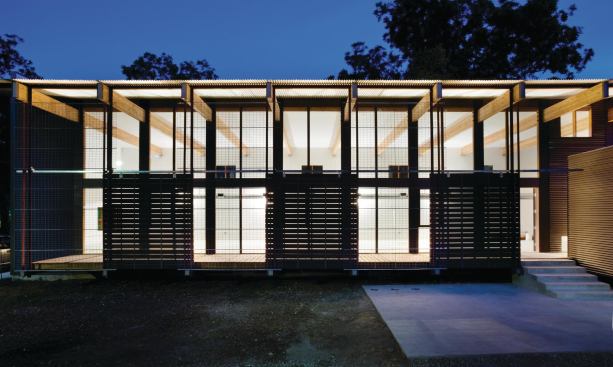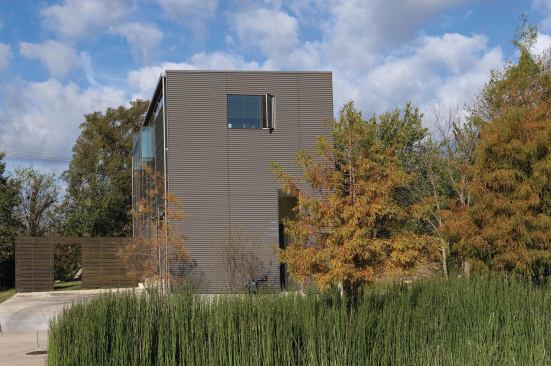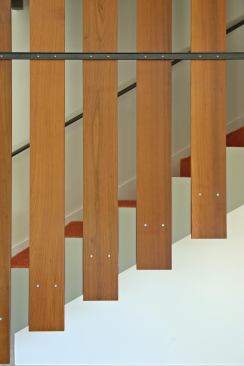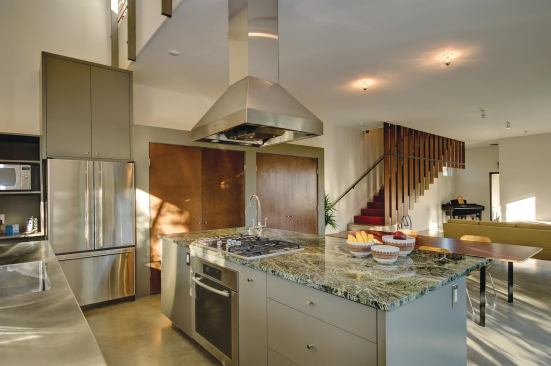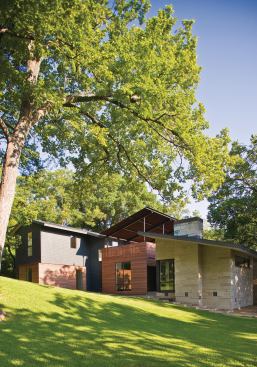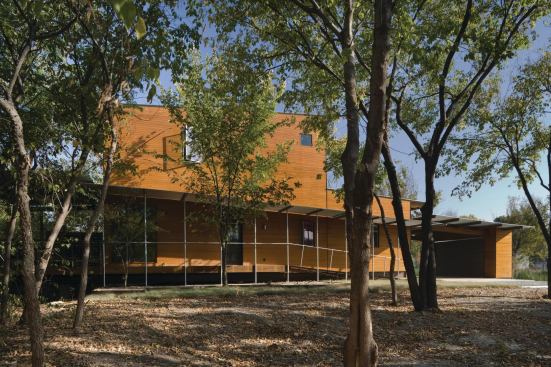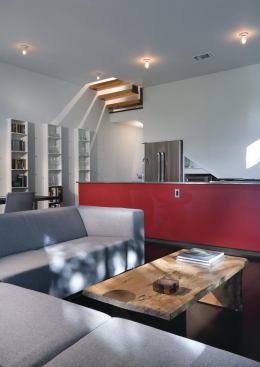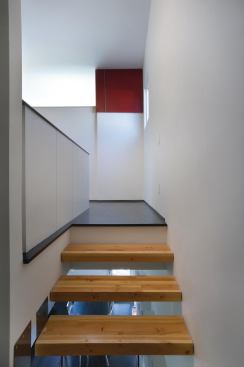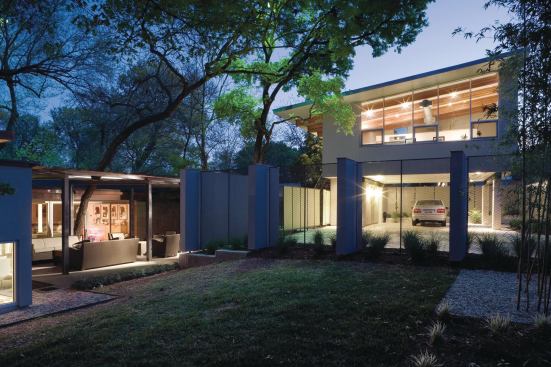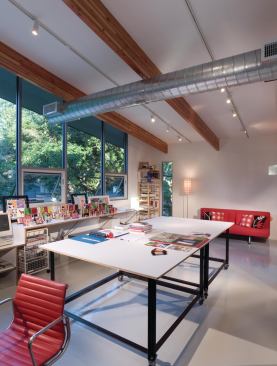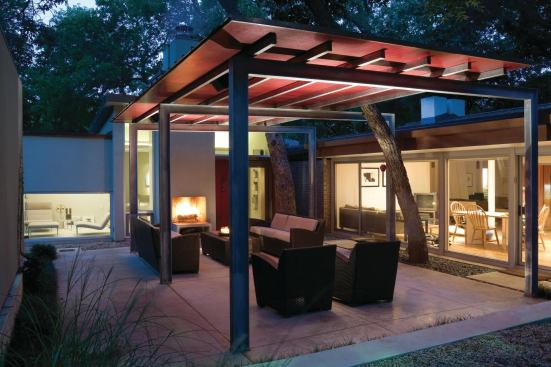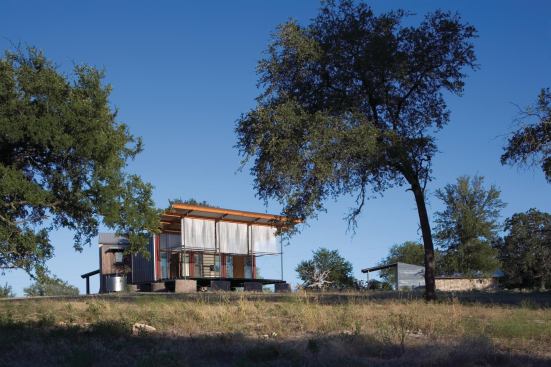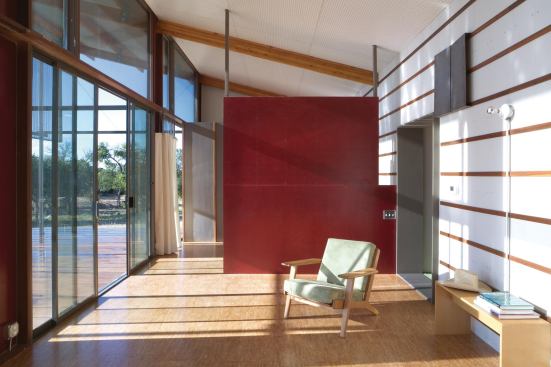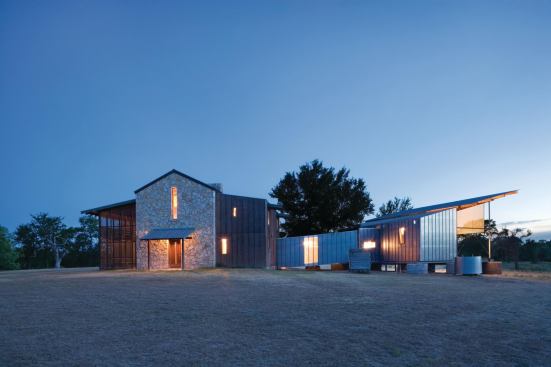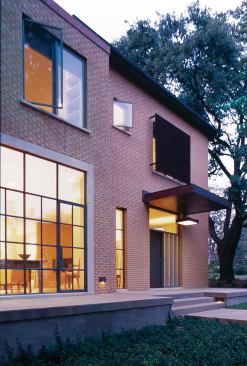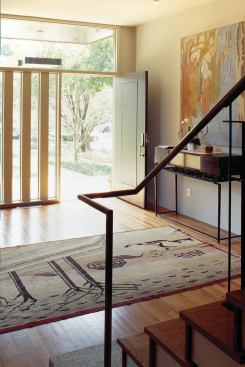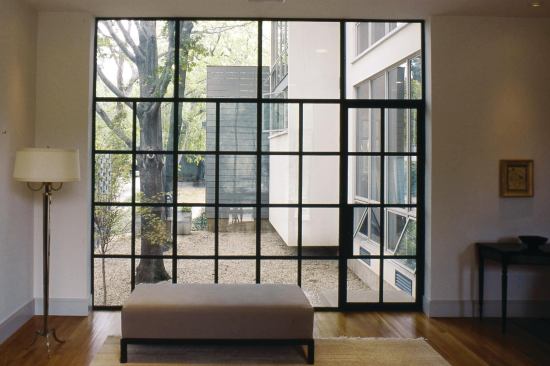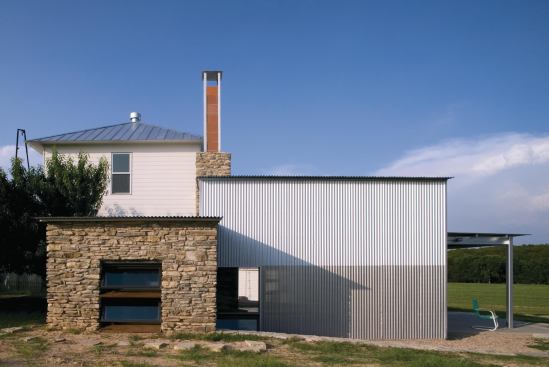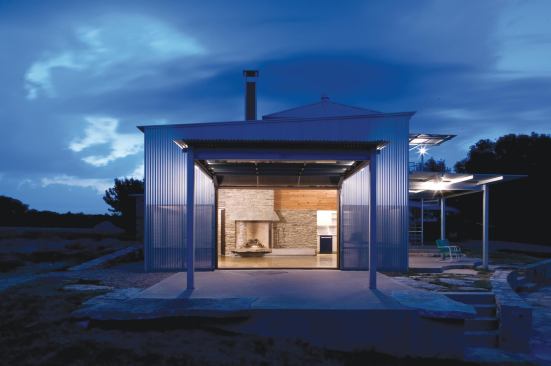Danny Turner
Dan Shipley, FAIA, values corrugated metal for its tough charact…
box office
Dan Shipley, FAIA, likes to call his studio’s neighborhood an “urban territory.” Just south of downtown Dallas, the area originally was developed with single-family houses, but in the 1950s a new interstate highway cut it off from the more populated parts of the city. “It’s very urban because it’s downtown, but it’s also very open and kind of empty,” Shipley explains.
He staked his claim to a 0.2-acre property there in 2008. Over the past two years, he’s gradually designed and built a 24-foot-by-80-foot corrugated metal-clad box to serve as Shipley Architects’ workspace and calling card. The building features a healthy modicum of flexibility; its 18-foot-high ceilings can accommodate an eventual mezzanine space, and Shipley structured and wired the project to support two rooftop apartments in the future. A pair of small restroom buildings, also metal-clad, lies separately from the main building—“so we don’t encumber the big space with service-type space,” Shipley notes. Tubing embedded in the concrete floors supplies radiant heat as well as radiant cooling.
True to local tradition, the project sits on a pier-and-beam foundation. Metal and wood screens shade its windows and provide a measure of security. Inside, a central core acts as the firm’s library. When finished, the 8-foot-by-14-foot core’s outer walls will double as display areas for a collection of materials, fasteners, structural members, and maybe even tools. “It’ll be like a museum of materials lining the walls,” says staffer Jay Smith, AIA, LEED AP.
By giving such prominence to the building blocks of its work, the firm makes a strong statement about its priorities. “That’s what we do,” Shipley says. “Materials and details are so important, we want to be able to lay our hands on them when we need them.”
detail-oriented
Shipley admits that accepting so many small projects isn’t always the best financial strategy. But he enjoys and craves the puzzles they pose, and has made smart business moves in other ways. After years of working alone, he expanded slowly and surely, reaching a full-time staff high of seven in 2008. He’s also balanced his portfolio with some institutional work. That diversity has come in handy recently, with private-school and civic projects helping him counter a recession-induced slowdown in residential commissions. The sluggish Dallas housing market has forced him to cut back to two full-time staff members (himself and project architect Jay Smith, AIA, LEED AP.) They’re forging ahead, stepping up the build side of the firm to supplement the design portion.
With the new economic austerity, Shipley’s longtime interest in doing more with less has gained traction among many of his fellow architects. They’d do well to look at the way he handles details, from the most modest of projects up through his high-end work. “His details are personable,” Levy says. “You reach for a door handle and look down and think, ‘Oh, this is cool.’ It’s a friendly, warm architectural language.” Austin, Texas–based Mell Lawrence, FAIA, views Shipley’s details as part of a larger whole. “When you zoom in, you notice all the clever details,” he says. “When you zoom out, you see a well-composed thing that does a lot with light and shadow. He pays so much attention to the composition.”
Sometimes Shipley designs a detail first, and then the project flows from there; in other cases he does the reverse. Either way, he remains in control of the design while still allowing himself leeway for improvisation. “Restraint is one of the salient features of Dan’s work,” says Stephen Sharpe, editor of Texas Architect magazine.
Shipley has spent most of his life in Texas, and the agrarian buildings dotting the rural landscape there serve as some of his biggest influences. He’s even devoted a section of his website to them, under the heading “Roadside Attractions.” The idea of these utilitarian structures created by anonymous builders appeals to his sense that a good building needs a human touch. “A lot of people in the profession are so keen on perfection and precision,” he says. “I see it as more about accuracy and ideas. I’m not interested in perfection—it seems sort of hollow to me.” Instead, he designs each residential project toward a deeper, more complicated goal: to make a good place to live.
